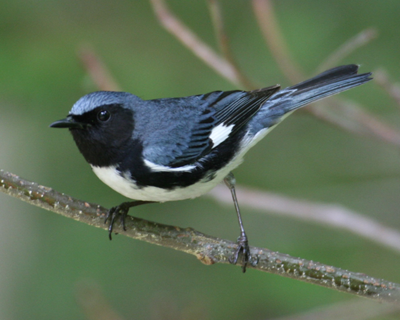
The Black-throated blue Warbler breeds in North America and winters mainly in the Bahamas and the Caribbean where it can be seen for nine months from September to May in gardens and forests. It feeds on insects and small berries.
|
Grand Bahama, The Bahamas -
International Migratory Bird Day
, this year on
Saturday, October 24th, is a celebration of the spectacular
journey that migratory birds take between their summer and winter homes. Many
species of migratory birds spend the winter in or migrate through the Bahamas
and the Caribbean. They rely on the food, water and shelter provided in our pine forest, hardwood, scrub and wetland habitats for up to 9 months out of the
year.
At the Garden of the Groves we want to educate about migratoy birds
and work with the community to protect their habitat. The official month to
celebrate International Migratory Bird Day in the Bahamas and throughout the
Caribbean is October and many island nations have special events to raise
awareness of birds and the protection of their winter habitat. International
Migratory Bird Day is sponsored by the Society for the Conservation and Study of
Caribbean Birds (SCSCB) of which the Garden of the Groves is a member.
Bird habitats in the Bahamas and the Caribbean are as unique as the islands
themselves. Each island differs from the next because it has its own combination
of climate, topography, geology and soils which lead to the high numbers of
endemic birds in the region.
The main type of natural bird habitat in the Bahamas
include pineforest, hardwood forest, xeric (dry) scrub, wetlands and
coastal habitats. The Bahamian pineforest only occurs on the four northern
island of the Bahamas - Grand Bahama, Andros, Abaco and New Providence. The
species is of the
bahamensis variety that is endemic to the Bahama
Islands. According to a study by the
World Bank the pineforest
is one of the most endangered ecosystems in the Caribbean, threatened by
clearing for development and agriculture, by hurricanes, fires and invasive
species. Hardwood forests and scrub habitat face the same threats.
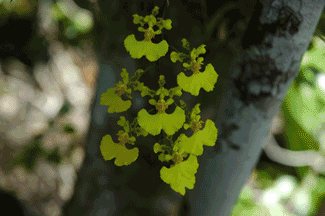
Seen here in images are 4 of the 5 main types of natural bird habitats in the Bahamas include pineforest, hardwood forest, xeric (dry) scrub, wetlands and coastal habitats.
|
Mangrove wetlands and coastal areas that provide habitat for many species
of resident and migratory wading birds, ducks, seabirds and shorebirds are
severely threatened throughout the Bahamas by construction of hotels and
resorts, marinas, golf courses and ports.
The Garden of the Groves represents a wonderful example of what we can do
to increase the quality of bird habitat for migratory and resident bird species.
Good management practices like preserving and planting native trees such as
Horseflesh, Gumelemi, Cinnecord, Tamarind, Inkwood, Poisonwood and Seagrape will
provide hungry birds with insects and berries as well as shelter. For the
nectar-feeding birds there is ample supply of Hibiscus, Firebush, Firecracker,
Lantana, Golden Dewdrop and Ruellia. Garden of the Groves uses no
herbicides and pesticides but rather lets the hungry migrants that descend
on the Garden do their job. One may encounter leaves that might not look perfect
to the human eye but they are heaven for the caterpillars who munch away only to
be devoured by a famished woodpecker. A large compost enclosure sits at the back
of the Garden where daily rakings of leaves, twigs, grasses and organic
kitchen remnants are deposited. After a while this rich compost heap will
provide nourishment for plants and trees of the Garden.This procedure eliminates
heavy applications of chemical fertilizers to the soil.
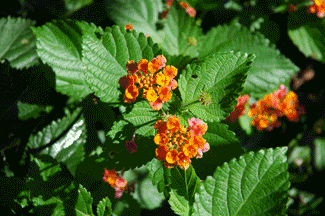
Lantana (orange flowers)in the Garden is visited by nectar-eating birds; Seagrape is a favourite of resident and migratory birds; and red Gumelemi or Gumbo Limbo, known as the "Tourist Tree" provides succulent berries for birds
|
All of the above-mentioned practices can be applied to private gardens as
well. When we preserve and improve one habitat at a time our islands will
soon provide the best wintering grounds for migratory birds ever!
Why is it important to preserve bird habitat?
Tourism: Many people visit our islands to see our unique
and beautiful Bahamian endemic bird species in their diverse habitats.
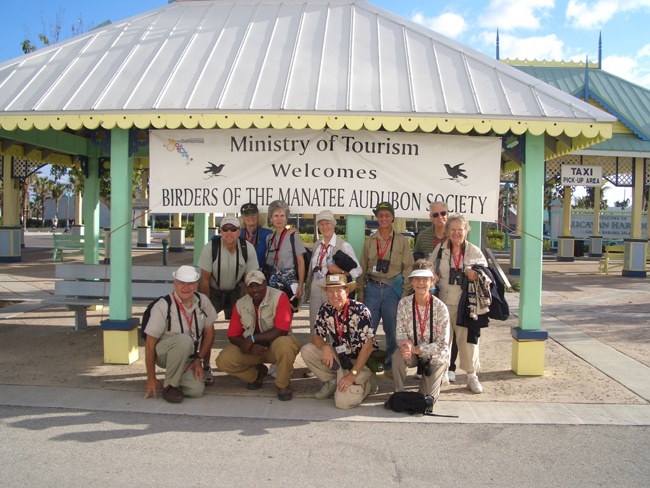
Birders arriving by cruise ship for the day
|
Pest Control: Insectivorous birds control pests and reduce
the need for pesticides. This will preserve the quality of our drinking water.
Pesticides can contaminate our fresh water lens below the surface of the
islands
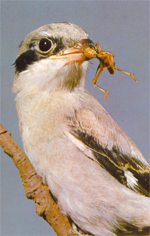
Birds are natural insect and pest control
|
.
Pollination: Nectivorous birds, such as hummingbirds and
bananaquits, pollinate flowering vegetation and trees as well as
agricultural crops. White-crowned Pigeons spread the seeds of hardwood trees
through the forests.
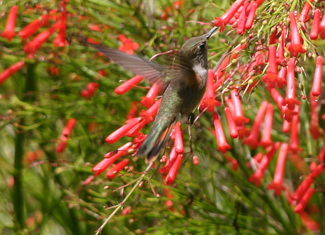
The endemic Bahama Woodstar feeding on Firecracker
|
Education, Enjoyment and Spiritual Renewal: Birds are
everywhere and are easy and fun to observe. They provide a wonderful means of
connecting to nature and opportunities for learning.
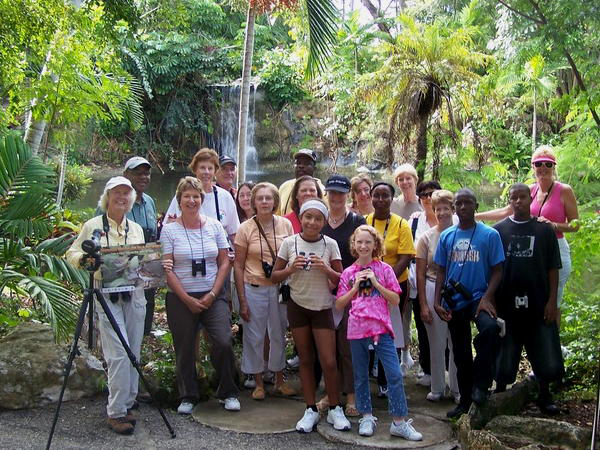
Birding at Garden of the Groves.
|
